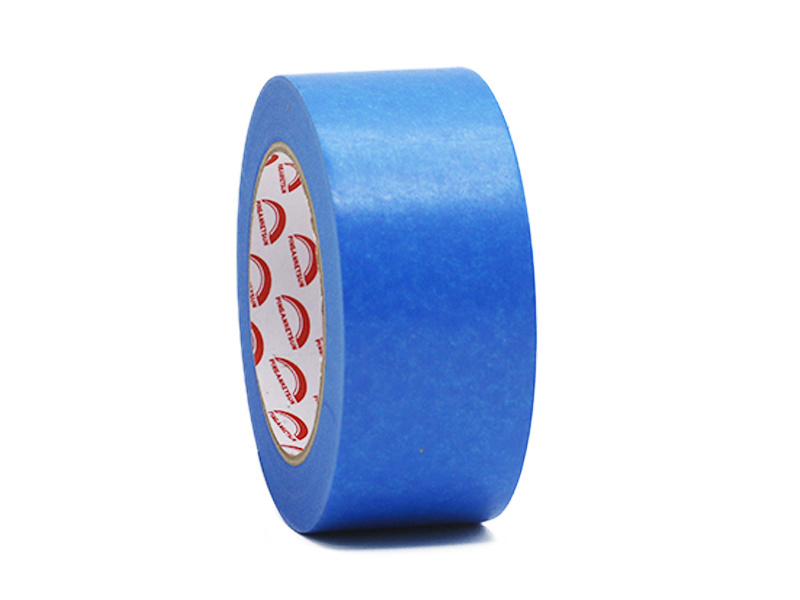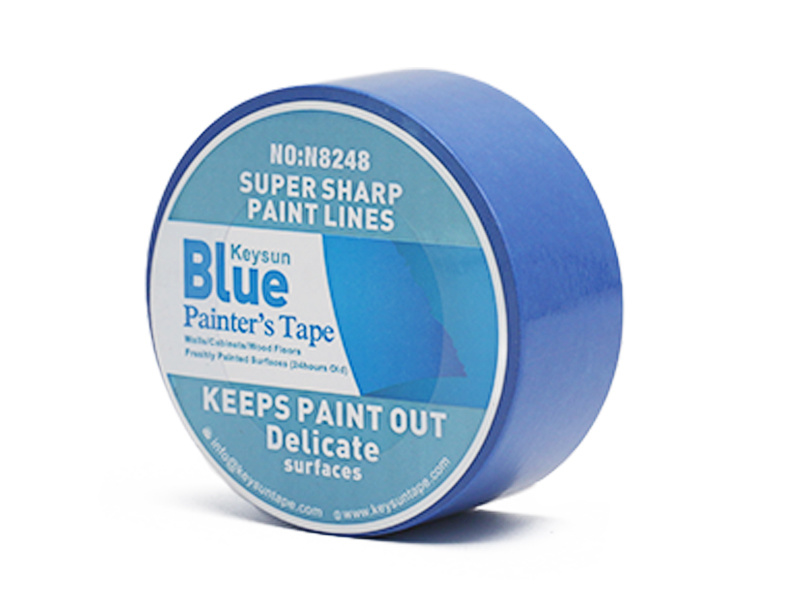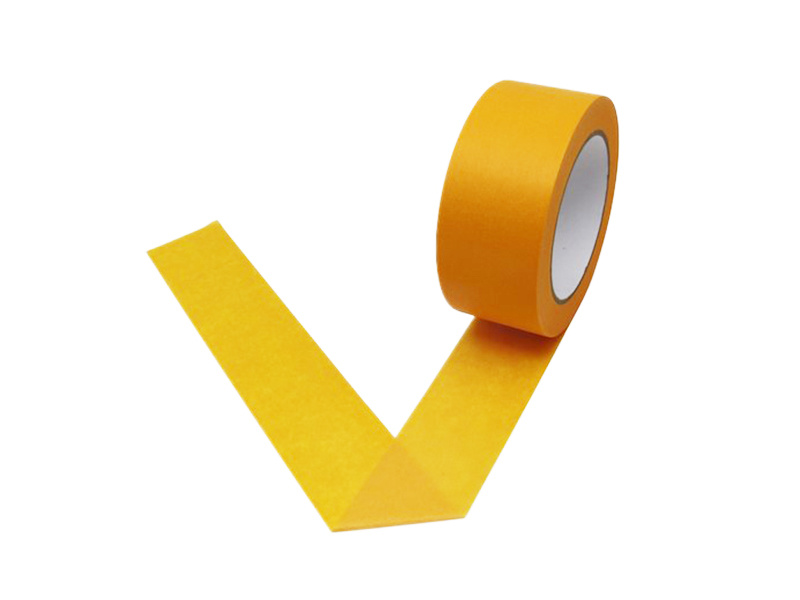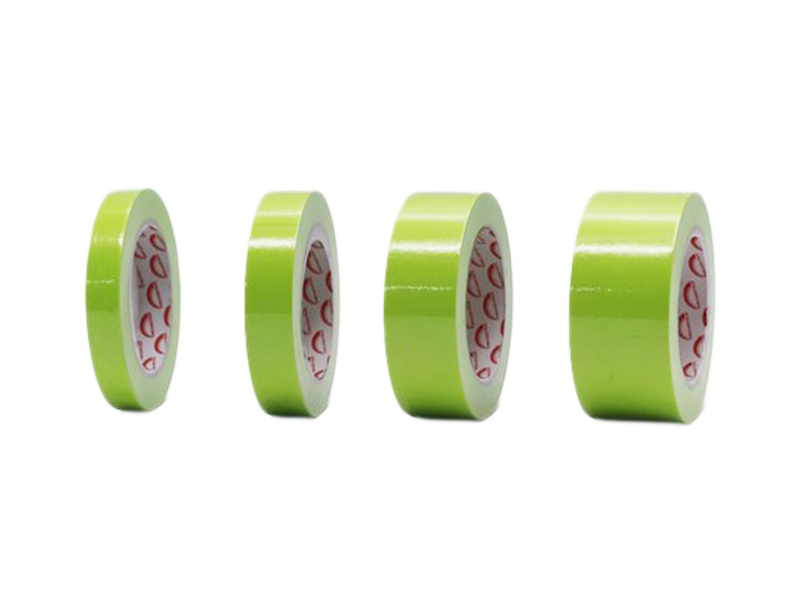Achieve Precision with Delicate Painters Tape: The Art of Clean Edges
Release Time:
2025-07-14
Source:
Achieve Precision with Delicate Painters Tape: The Art of Clean Edges
Table of Contents
- 1. Introduction to Delicate Painters Tape
- 2. Benefits of Using Delicate Painters Tape
- 3. Different Types of Painters Tape
- 4. How to Use Delicate Painters Tape for Clean Edges
- 5. Preparation Tips for Optimal Results
- 6. Common Mistakes to Avoid When Using Painters Tape
- 7. Advanced Techniques for Professionals
- 8. Maintenance and Removal of Painters Tape
- 9. Frequently Asked Questions
- 10. Conclusion
1. Introduction to Delicate Painters Tape
In the world of painting and home improvement, achieving **clean edges** can transform an ordinary project into a masterpiece. Delicate painters tape is specifically designed to help both amateur and professional painters create sharp lines and prevent paint bleed. This specialized tape adheres well to various surfaces while being gentle enough to avoid damage upon removal. In this article, we explore the nuances of using delicate painters tape and provide you with the tools needed to master the art of clean edges.
2. Benefits of Using Delicate Painters Tape
Using delicate painters tape offers a plethora of advantages that can elevate your painting experience:
Enhanced Precision
With its ability to create sharp lines, painters tape ensures that colors remain distinct and vibrant. This is particularly important when working on intricate designs or multi-colored walls.
Protection of Surfaces
Delicate painters tape protects surfaces from unwanted paint splatters and stains, allowing for cleaner workspaces and reducing the need for extensive cleanup.
Easy Removal
One of the standout features of delicate painters tape is its easy removal process. Unlike traditional masking tapes, it peels off cleanly without leaving behind residue or damaging the underlying surfaces.
Versatility
This tape is suitable for a variety of applications, including walls, trim, glass, and even delicate surfaces like wallpaper. Its versatility makes it a must-have tool in any painter's toolkit.
3. Different Types of Painters Tape
There are several types of painters tape available on the market, each designed for specific applications. Understanding these different types will help you choose the right one for your project.
Standard Painters Tape
This is the most common type, ideal for general use on walls and ceilings. It provides decent adhesion and is suitable for most paints.
Delicate Surface Tape
Specifically designed for delicate surfaces, this tape minimizes the risk of damage when removed. It is perfect for painted walls, wallpaper, and even freshly painted surfaces.
Multi-Surface Tape
As the name suggests, this tape adheres to various surfaces, including wood, metal, and plastic. It's a versatile option for projects that involve multiple materials.
Specialty Tapes
These include tapes formulated for specific functions, such as **high-temperature masking tape** for use in automotive or industrial applications.
4. How to Use Delicate Painters Tape for Clean Edges
To achieve flawless results with delicate painters tape, following a step-by-step guide ensures that you maximize its potential.
Step 1: Choose the Right Tape
Select a delicate painters tape suited for your specific project and surface. Always read the manufacturer’s recommendations for optimal results.
Step 2: Prepare the Surface
Ensure that the surface is clean, dry, and free of dust. Use a mild detergent if necessary, and let it dry completely before applying the tape.
Step 3: Application of Tape
Carefully apply the tape, pressing it down firmly to prevent any paint from seeping underneath. Use a straight edge or a level to ensure straight lines.
Step 4: Paint with Care
When painting adjacent to the tape, use a brush or roller to apply the paint gently. Avoid overloading your brush or roller to minimize the risk of paint bleed.
Step 5: Removal of the Tape
For the best results, remove the tape while the paint is still slightly wet. Pull the tape back on itself at a 45-degree angle for a clean edge.
5. Preparation Tips for Optimal Results
The success of using delicate painters tape largely depends on your preparation. Here are a few tips:
Clean the Surface
Ensure the surface is free of dust and grease. Use a damp cloth to clean it, and allow it to dry completely.
Use a Primer
If painting over a dark color or a glossy finish, applying a primer can help achieve better coverage and reduce the risk of bleed-through.
Test the Tape on a Small Area
Before committing to a large area, test the tape on a small section to see how it adheres and removes.
6. Common Mistakes to Avoid When Using Painters Tape
Even experienced painters can make mistakes. Here’s what to avoid:
Not Pressing the Tape Firmly
Failing to press the tape down properly can lead to paint seeping underneath, ruining clean lines.
Using the Wrong Type of Tape
Using standard tape on delicate surfaces can cause damage. Always choose the appropriate tape for your specific needs.
Removing Tape Too Early
Removing tape too soon can result in smudged paint. Wait until the paint has properly set but is still slightly wet.
7. Advanced Techniques for Professionals
For those looking to take their painting projects to the next level, consider these advanced techniques:
Layering Colors
Using multiple colors in a single project can create stunning effects. Be sure to allow each layer to dry before applying the next tape.
Creating Patterns
Use multiple pieces of tape to create geometric designs or stripes. This technique can add a unique flair to any space.
Using a Paint Edger
For the utmost precision, consider using a paint edger tool along with your tape to enhance clean lines and edges.
8. Maintenance and Removal of Painters Tape
Proper maintenance of painters tape is essential for effective results. Here are some tips:
Store Properly
Keep painters tape in a cool, dry place to maintain its adhesive properties.
Monitor Expiration Dates
Check for expiration dates on the packaging. Old tape can lose its stickiness and effectiveness.
Remove Carefully
When removing, do so slowly and at an angle to prevent tearing or leaving residue.
9. Frequently Asked Questions
What is delicate painters tape?
Delicate painters tape is a specialized adhesive tape designed to create clean lines on fragile surfaces without causing damage upon removal.
Can I use painters tape on wallpaper?
Yes, delicate painters tape is specifically designed for use on wallpaper and other delicate surfaces.
How long can I leave painters tape on?
For best results, it’s recommended to remove the tape within 24 hours. If left for longer periods, it may become difficult to remove.
What should I do if the paint bleeds under the tape?
If paint bleeds, it may be due to improper application or removal. Ensure that the tape is pressed down firmly and removed at an angle.
Can painters tape be reused?
While it’s not recommended to reuse painters tape, you may be able to use it for small touch-ups if it hasn’t been exposed to paint.
10. Conclusion
Delicate painters tape is an invaluable tool for anyone looking to achieve precision and clean edges in their painting projects. By understanding the different types of tape, mastering proper application techniques, and avoiding common mistakes, you can elevate your painting skills to new heights. Whether you are a DIY enthusiast or a professional painter, incorporating delicate painters tape into your process will ensure that your work is both beautiful and precise. Now is the time to embrace the art of clean edges and unleash your creative potential!
Related Information
Achieve Precision with Delicate Painters Tape: The Art of Clean Edges
Achieve Precision with Delicate Painters Tape: The Art of Clean Edges Table of Contents 1. Introduction to Delicate Painters Tape 2. Benefits of Using Delicate Painters Tape 3. Different Types of Painters Tape 4. How to Use Delicate Painters Tape for Clean Edges 5. Preparation Tips for Optimal Results 6. Common Mistakes to Avoid When Using Painters Tape 7. Advanced Tec
Understanding Delicate Painters Tape: Essential Insights for Professionals
Delicate Painters Tape, as the name implies, is designed specifically for use on delicate surfaces that require a gentle touch. Unlike standard masking tapes, this specialized tape is engineered to minimize adhesion while still offering precise paint lines. This characteristic makes it ideal for use on surfaces such as freshly painted walls, wallpaper, or delicate finishes that could be easily dam
General Washi Tape: The Essential Tool for Craft Enthusiasts and Hobbyists
General Washi Tape: The Essential Tool for Craft Enthusiasts and Hobbyists Table of Contents 1. Introduction to General Washi Tape 2. What is Washi Tape? 3. Unique Features of General Washi Tape 4. Creative Uses for Washi Tape 5. Benefits of Using Washi Tape in Crafts 6. How to Choose the Right Washi Tape for Your Projects 7. Exciting Washi Tape Project Ideas
Unlocking the Versatility of High Adhesive Washi Tape for Your Projects
High Adhesive Washi Tape has gained popularity in various industries due to its unique properties and versatility. Unlike conventional tapes, washi tape is made from natural fibers, primarily from the bark of the mulberry tree. This material not only provides a distinct aesthetic appeal but also offers strong adhesion capabilities, making it ideal for a wide range of applications.










